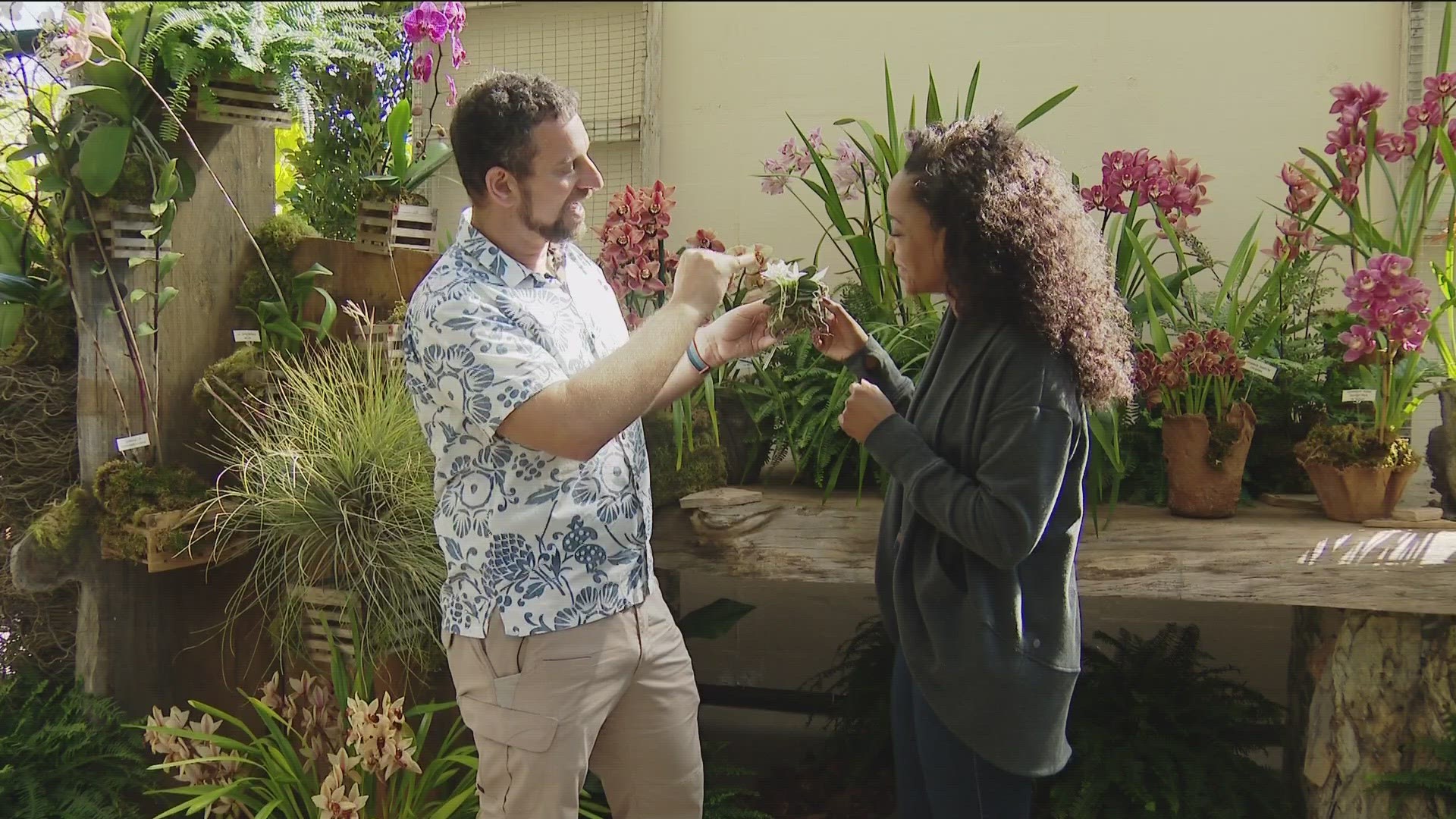ENCINITAS, Calif. — The San Diego Botanic Garden is a great place to see the beauty of nature on display. For a third year, this 37-acre urban landscape in Encinitas welcomed Spring with the vibrant colors and diverse beauty of orchids.
"We like to do an orchid show every year in part because orchids are so beautiful. No plant, I think, captures the human, sort of, imagination and sense of beauty as well as orchids," said Ari Novy, PhD., the San Diego Botanic Garden President and CEO.
The garden showcased a weekly rotation with 200 orchids on display at any given moment. The exhibit ran from Saturday, March 11, through Sunday, April 9. If you didn't get a chance to check it out this year, mark your calendars for 2024.
People took in the vibrant colors of these flowers and snapped away with their cameras admiring the locally bred hybrids and rare species plants in the Dickinson Family Education Observatory.
"So if you look at the orchids that we have in this display, whenever they have names that are like English names. So, if you see only a hard-to-pronounce Greeky Latin name, we call a species orchid. That is exactly as it would be in nature. But, if it has an English name on it, and this one is 'Firestorm Blaze,' that means that a human being bred it, which means they are breeding it now for beauty rather than its ecological place," explained Novy.
These flowery beauties aren't your grocery store and garden center orchids. Here's the difference. Those are called Tropical Empathetic Orchids, a plant that grows on another plant. Their roots don't go into the soil, and they are packed loosely in a dry airy plant mix, sometimes mixed with moss like they were still in the rainforest.
"Some of them will last weeks and weeks before they finish blooming, which is amazing when you think about it, and then that flowering stalk will die back, and you'll be left with those strap-like leathery leaves. If you put them in the cool spot and ignore them for a while, make sure they don't completely dry out and hold onto them long enough, they will often rebloom for you," detailed Novy.
And speaking of the grocery store, did you know you will find orchids in the baking aisle?
"If you go to the store and buy real vanilla beans, which are brown and dry, that is this after it has matured. It's physical progress that allows the vanilla bean to mature into the vanilla spice that we buy in the store," explained Ari Novy.
You heard Ari correctly; vanilla spice comes from an orchid pod. It is just called a bean because it looks like a string bean.
"When you are eating cookies and cakes and everything delicious and vanilla, you're eating orchid deliciousness," exclaimed Novy.
Here's some food for thought. We are not the only ones who feed off orchids. These unique flowers' different colors and structures serve food for insects that feed off their nectar and pollinate different orchids. Moths with long tongues like these particular beauties.
"So that specific species of moth with a tongue of the right size, it can get in there, it un-frails its long tongue to get the nectar, and then the orchid slaps it with pollen on its head and then that way the pollen will move from this one plant, specifically to the next orchid of the same species," explained Novy.
The vast diversity of insects correlates with the vast diversity of orchids we see. And to see these beauties thrive is a good sign for our planet's ecosystem.
"If we begin to lose orchids out in the ecosystem, that's a real indicator that that ecosystem is going out of whack. And for that reason, orchids are also among the more endangered plants in the world," said Novy.
And that wouldn't be good for insects or us.
To see other exhibits and activities featured at the San Diego Botanic Garden, visit their website at https://sdbg.org/
WATCH RELATED: Rare, smelly 'corpse flower' blooms at San Diego Botanic Garden

